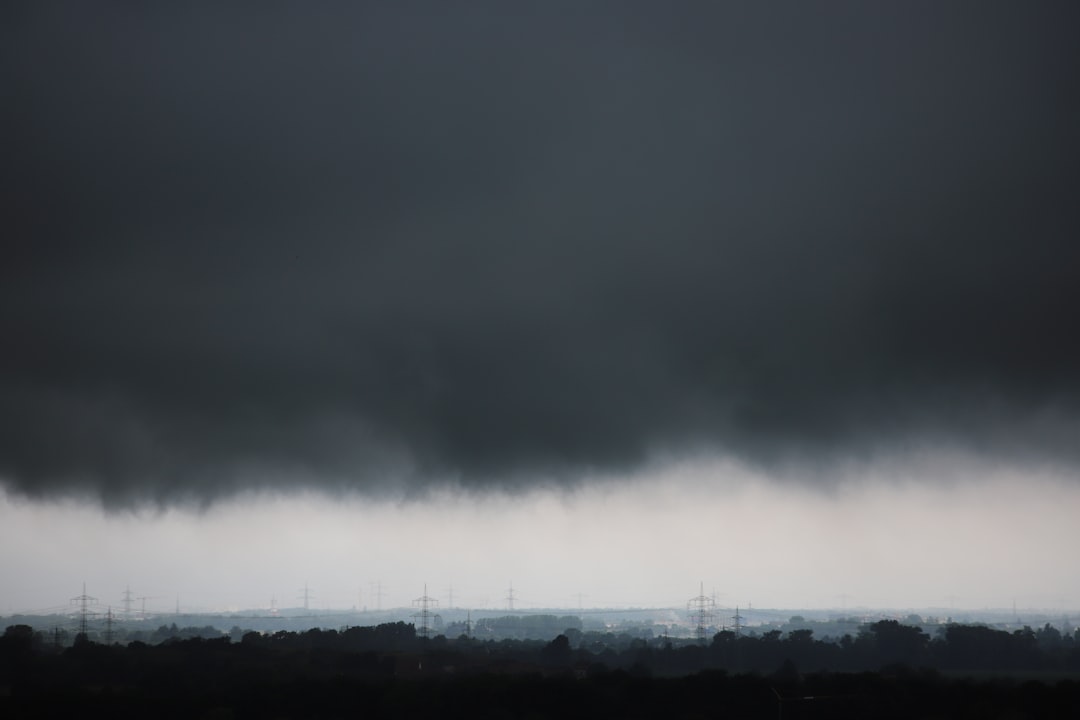Welcome, fellow travelers and climate enthusiasts! Understanding the intricate dance of global weather patterns and seasonal changes is not just fascinating; it’s essential for planning your next adventure, whether you’re chasing the sun or seeking snowy peaks. This comprehensive guide will demystify the diverse climates across our planet, helping you anticipate what to expect and how to prepare for your journeys.
Did you know that while some regions experience four distinct seasons, others might only have two, or even none at all? This article will explore the unique characteristics of major climate zones, from the steamy tropics to the icy poles, providing practical insights into how seasons manifest differently around the world. We’ll cover key climate types, their typical weather, and how these patterns influence local life and travel experiences.
Tropical Climates: The Realm of Perpetual Summer
Tropical climates, found near the Equator between the Tropics of Cancer and Capricorn, are characterized by consistently high temperatures and significant humidity throughout the year. These regions typically do not experience the four distinct seasons common in temperate zones. Instead, they often have two primary seasons: a wet (rainy) season and a dry season.
Average daily temperatures in tropical zones rarely drop below 18°C (64°F), and daily temperature fluctuations are often greater than seasonal ones. The abundant rainfall supports lush rainforests and diverse ecosystems, making these areas incredibly biodiverse but also prone to heavy downpours and high humidity.

Monsoons and Their Impact
Many tropical regions, particularly in South and Southeast Asia, experience monsoons. A monsoon is a seasonal change in wind direction that causes distinct wet and dry periods. The summer monsoon brings heavy rainfall, which is crucial for agriculture but can also lead to flooding. The winter monsoon is typically drier and cooler.
Temperate Climates: The Four-Season Spectacle
Temperate zones, located between the tropics and the polar circles, are renowned for their four distinct seasons: spring, summer, autumn (fall), and winter. These regions experience a wide range of temperatures throughout the year, with clear transitions between warm and cold periods.
The changing angle of the sun’s rays throughout the year causes significant variations in daylight hours and temperature, leading to the characteristic seasonal shifts. From the blossoming of spring to the vibrant foliage of autumn and the snow-covered landscapes of winter, temperate climates offer diverse experiences.
Seasonal Variations and Activities
Each season in a temperate climate brings its own unique weather patterns and opportunities for activities:
- Spring: Mild temperatures, increasing rainfall, blooming flowers, and thawing landscapes. Ideal for hiking and sightseeing.
- Summer: Warm to hot temperatures, longer daylight hours, and generally less rain. Perfect for outdoor recreation, beaches, and festivals.
- Autumn (Fall): Cooling temperatures, decreasing daylight, and spectacular fall foliage as leaves change color. Excellent for scenic drives and harvest festivals.
- Winter: Cold temperatures, often below freezing, with snow and ice common in many areas. Suited for winter sports like skiing and snowboarding.
Arid and Desert Climates: Extremes of Temperature
Arid and desert climates are defined by their extremely low precipitation, often receiving less than 250 mm (10 inches) of rain annually. These regions are typically found around 30 degrees latitude north and south of the Equator, where descending dry air masses create high-pressure zones.
The most striking feature of deserts is their dramatic temperature swings. Days can be scorching hot, with temperatures exceeding 40°C (104°F), while nights can drop significantly, sometimes below freezing, due to the lack of cloud cover to trap heat.
Adapting to Desert Extremes
Life in the desert, both human and animal, has evolved unique adaptations to survive these harsh conditions. Travelers should be prepared for intense sun exposure and significant temperature differences between day and night. Hydration is paramount, and layered clothing is essential.
The Sahara Desert, the largest hot desert in the world, can experience daytime temperatures well over 50°C (122°F) and nighttime temperatures that can fall close to 0°C (32°F), showcasing the extreme diurnal range characteristic of arid climates.
Polar Climates: The Frozen Frontiers
Polar climates are found at the Earth’s poles, specifically the Arctic and Antarctic regions. These are the coldest places on Earth, characterized by extremely low temperatures, long, dark winters, and short, cool summers. Precipitation is minimal, often falling as snow, making them technically “polar deserts.”
Much of the land in polar regions is covered by ice sheets and glaciers, and permafrost (permanently frozen ground) is common. The unique phenomenon of 24-hour daylight in summer and 24-hour darkness in winter is due to the Earth’s axial tilt relative to its orbit around the sun.

Unique Wildlife and Landscapes
Despite the harsh conditions, polar regions support unique wildlife adapted to the cold, such as polar bears, penguins, seals, and various bird species. The landscapes are starkly beautiful, dominated by vast expanses of ice, snow, and rugged mountains.
For those venturing to these remote areas, specialized cold-weather gear is absolutely essential. The best time to visit is typically during the brief summer months (June-August in the Arctic, November-February in the Antarctic) when temperatures are “warmer” and daylight is continuous.
Mediterranean Climates: Sunny Summers, Mild Winters
Mediterranean climates are a distinct type of temperate climate found in specific regions around the world, not just the Mediterranean Basin. They are characterized by hot, dry summers and mild, wet winters. This unique pattern is influenced by shifting high-pressure systems.
These climates are typically found on the western sides of continents between 30 and 45 degrees latitude. Besides the Mediterranean Sea region, examples include parts of California, central Chile, the Cape Region of South Africa, and parts of southwestern and southern Australia.
Ideal Seasons for Travel
The pleasant weather makes Mediterranean climates highly desirable for tourism. Summers are perfect for beach activities and enjoying the sunshine, while the mild, green winters are ideal for exploring historical sites and hiking without extreme heat.
The Shifting Sands: Climate Change and Weather Patterns
It’s impossible to discuss global weather patterns in 2025 without acknowledging the profound impact of climate change. While natural variability has always existed, human-induced climate change is leading to more extreme and unpredictable weather events worldwide.
Rising global temperatures are altering traditional seasonal patterns, intensifying heatwaves, changing precipitation regimes, and contributing to more frequent and severe storms. Understanding these broader trends is crucial for both long-term planning and immediate travel safety.
Unpredictable Weather Events
Regions that historically experienced mild winters might now see heavy snowfall, while areas accustomed to consistent rainfall might face prolonged droughts. This unpredictability underscores the importance of checking localized, up-to-date weather forecasts before and during your travels. For more detailed information on global climate trends, you can refer to reports from reputable organizations like the World Meteorological Organization (WMO) on the State of the Global Climate. This link provides comprehensive data and analysis on current climate conditions and trends.
Preparing for Diverse Climates: Your Travel Checklist
No matter where your wanderlust takes you, being prepared for the local weather and seasonal shifts is key to a comfortable and enjoyable trip. Here’s a general guide to packing and planning:
Packing Essentials by Climate Zone
Consider these items based on your destination’s climate:
| Climate Zone | Key Essentials |
|---|---|
| Tropical | Light, breathable clothing (cotton, linen), rain gear (light jacket, umbrella), insect repellent, quick-drying fabrics. |
| Temperate | Layers are key! Depending on season: light jacket for spring/fall, swimwear for summer, warm coats/hats/gloves for winter. |
| Arid/Desert | Sun protection (hat, sunglasses, high SPF sunscreen), loose long-sleeved clothing, sturdy closed-toe shoes, plenty of water. |
| Polar | Extreme cold-weather gear (thermal layers, waterproof outer shells, insulated boots, heavy gloves, balaclava). |
| Mediterranean | Light clothing for summer, light jacket/sweater for evenings, comfortable walking shoes. Rain gear for winter. |
Always check the specific forecast for your destination just before you leave. Local weather patterns can vary even within a climate zone, and conditions can change rapidly.
Understanding global weather patterns and seasonal changes empowers you to be a more informed and prepared traveler. From the consistent warmth of the tropics to the dramatic shifts of temperate zones, each climate offers a unique experience. By knowing what to expect, you can pack smarter, plan better, and truly immerse yourself in the local environment.
We encourage you to delve deeper into the specific climate of your next dream destination. Research local microclimates, historical weather data, and seasonal events to optimize your travel plans.
Ready to plan your next weather-wise adventure?
What’s the most surprising weather phenomenon you’ve encountered on your travels, and how did you adapt?

